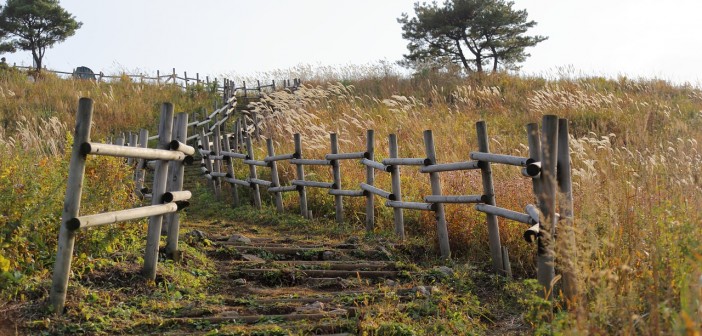Margaret Marcuson advises pastors to learn the history and familiar ways of a church before introducing change because the patterns of the past will have an effect, one way or another.
On a recent trip to Kansas for a family reunion, I made my way out to the property that used to be in my grandmother’s family. My great-great-grandparents had settled the land in the 1870s, moving from Ohio to central Kansas. We drove down the dusty, gravel-strewn road, between the tawny stalks of wheat, along a route that had been used for generations to drive first horse-drawn wagons, then pickups and tractors, and now our silver rental car.
Churches have well-worn pathways as well, sometimes set down by the first “settlers,” sometimes developed along the way. These paths can be healthy and beneficial, like support and encouragement for the pastor, open communication even in times of high anxiety, or the ability to incorporate newcomers easily. Other patterns are not so useful, such as secrecy around money issues, conflict between people at the top or at the bottom, or a history of firing the leader when things get tough.
You need to know where the paths are, what is most familiar to people. Knowing the history and the patterns, acknowledging their presence, while still keeping somewhat free of them, can give you the credibility to invite followers to step outside of them when needed. Leaders will probably find that people react — “You’re stepping off the path!” — before they are able to follow. They may even try to pull you back on the path, creating a crisis (instinctively, not necessarily intentionally) to suck you back into the old ways of doing things. But if you stay in touch with them, while still firmly stating the importance and value of experimenting with new paths, chances are they will come along, no doubt glancing over their shoulders at the old, lovely and familiar ways.
We saw something else on that Kansas farm — oil wells pumping. Yes, we shared a moment of regret that the property was no longer in the family! But I have to admire whoever realized that wheat was not the only potential resource. Someone dug deep, went beyond the usual, and now, decades later, oil is still coming out of the ground. When we are able to look beyond the moment, beyond the quick fix, magic-bullet approach, we may be able to tap into deep resources that will sustain us, and our organizations, for a long time to come.
The resources we need for our community life are both universal and particular. All churches can tap into the bottomless well of Scripture and prayer, which can sustain us if we draw on them in ways which are ongoing and substantive. Churches need leaders who pray and engage with the Bible, and not only on Sunday mornings. As a young pastor facing a church financial crisis, I knew when the treasurer said, “We need to pray about this,” that if our treasurer was in prayer about the money we would probably be all right. And we were. And every church has its own particular and unique strengths, its heritage of faith and hope, which can be a source of strength both in a crisis and week-to-week.
Finding the needed sustenance, and coming to terms with the past in ways that benefit the future, is never easy. But it is important to remember “the presence of the past,” as scientist Rupert Sheldrake calls it. The past need not determine the future, but if we ignore it, pretend the old paths are not there, we are more likely to be tripped up by the past, as powerful old patterns persist without our awareness. It works better to be curious, to look for the patterns, and to wonder and experiment with ways we might claim it and use it without being governed by it. Over time, we may find that the old section lines are still used, but in some new ways. Wheat and oil can come from the same land, both providing energy for human consumption. The old and the new exist side-by-side.
One church I worked with, St. Mark’s Episcopal in Teaneck, New Jersey, found that cooperation with the Catholic hospital next door worked like a charm. Everything they did together was successful. The rector, The Rev. Randall Day, learned that the same woman who gave the land for the church in the 1920s also gave the land for the hospital. He says, “As she saw it, these places would serve the community. Their purpose found their original meaning in Grace Chadwick’s visionary intention.” The two institutions share a historic connection that makes new things possible in the present.
What will help you learn more about the history of your congregation? Who carries the memory and how might you connect with them? It can be worth mapping out on paper — who were the leaders, official and unofficial, and what was their tenure? What significant events have marked the way, huge successes or major traumas? And what will help you think clearly about new paths you would like to take: what vision, even a small one, do you have? Where would you like to go next and who might be ready to move ahead? Path finding can be an adventure.
Related Resources
- Becoming More of What We Have Been Mary Alice Cunningham
- Tell Your Stewardship Story Margaret J. Marcuson
- Leaders Interpret the Present in Light of the Past Dwight J. Zscheile







